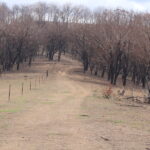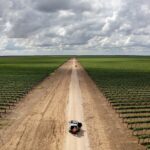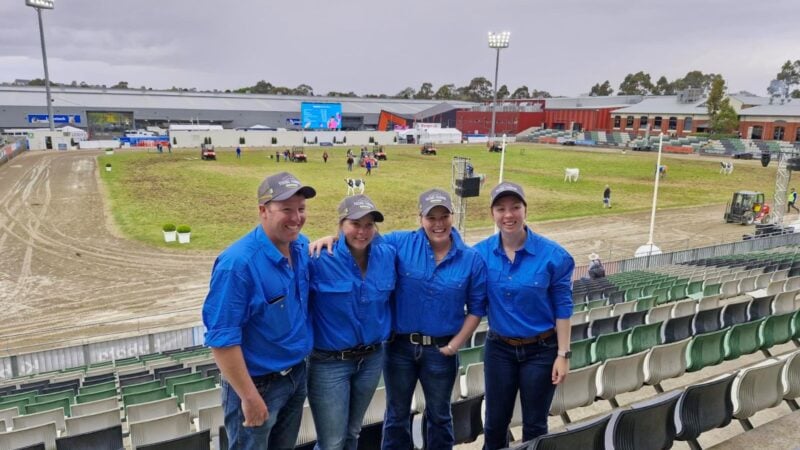NSW Farmers is inviting all farmers hit by the 2019/2020 bushfires to fill in a…
After the floods. What next for farmers?
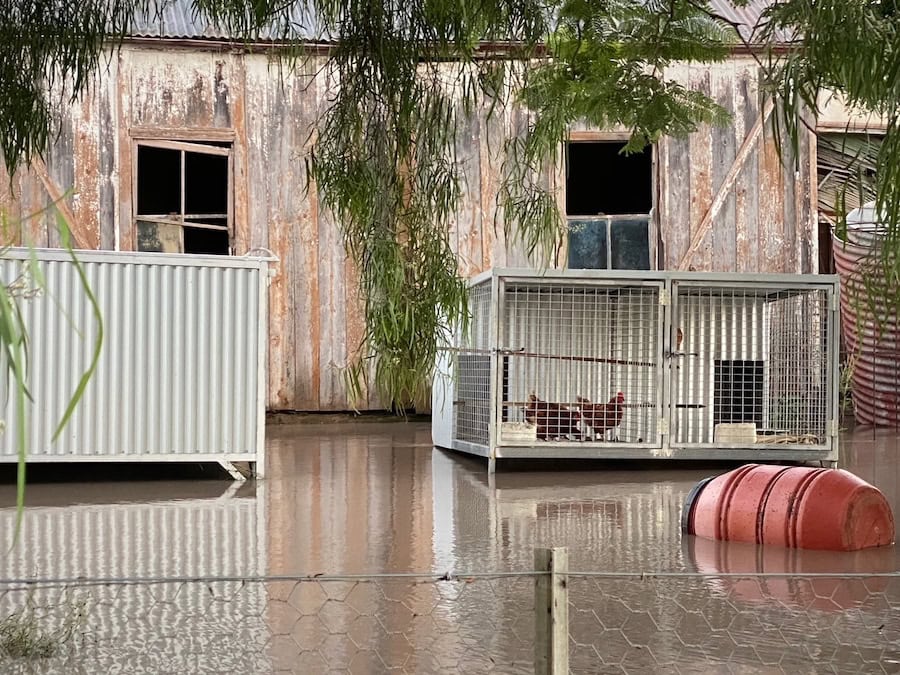
For cattle farmers Alison and Simon Deicke, the dry, rocky creek bed 20 metres long and a metre deep that now cuts through a grazing paddock is a stark reminder of the ferocity of the March 2021 floods that hit the Upper Rollands Plains.
�Simon gave up checking the amount of rain after we got to 950mmm, but some neighbours recorded 1200mm,� says Alison.
The couple experienced two floods over two days; it was the second that did the most damage. �It caused massive amounts of erosion and deposited hundreds of tonnes of rocks on two of our main paddocks. We won�t be able to plant some of our winter pastures at all this season,� Alison says.
She and Simon run Kogo Angus stud and a commercial herd on the 150-hectare farm, which like many others in the Mid North Coast region was recovering from the November 2019 bushfires. Their livestock survived the deluge, but damage to the farm and waterways is daunting.
�We�ve lost kilometres of fencing. Fencing is expensive and time consuming, but it can be replaced. The erosion, the rocks and our river system is a whole different ball game. It will take a coordinated effort to fix it, and that�s where I think groups like Landcare should get more funding.�
Cattle farmer Alison and Deicke
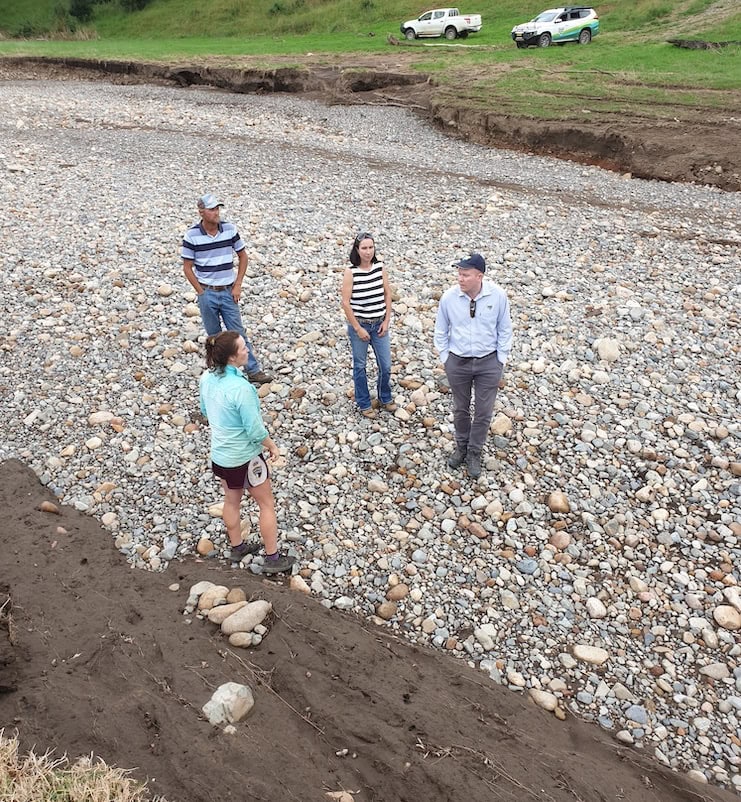
Seven kilometres down the road, the Noakes family dairy farm has a new island, after the flood gouged a new creek bed in the middle of a paddock. Diana Noakes estimates the damage on the family�s 325 hectares to run to $280,000, not including the cost of repairing erosion and restoring riverbanks. �The damage is massive. We�ll need some sort of bridge or cow pad to get cows across, as they won�t walk on the rocks,� Diana says. �Our valley was hit hard, we had no power or phone connection for 10 days and had to dump 30,000 litres of milk due to road closures. My father says it was bigger than the 1968 flood.�
Sixty-three Local Government Areas in the North Coast, Sydney Basin and North West regions were declared natural disaster zones due to the March flood and storm events. The full extent of the impact on the agricultural sector is still being assessed, but it is clear that beef, dairy, horticulture and oyster farmers face a tough 12 months ahead.�
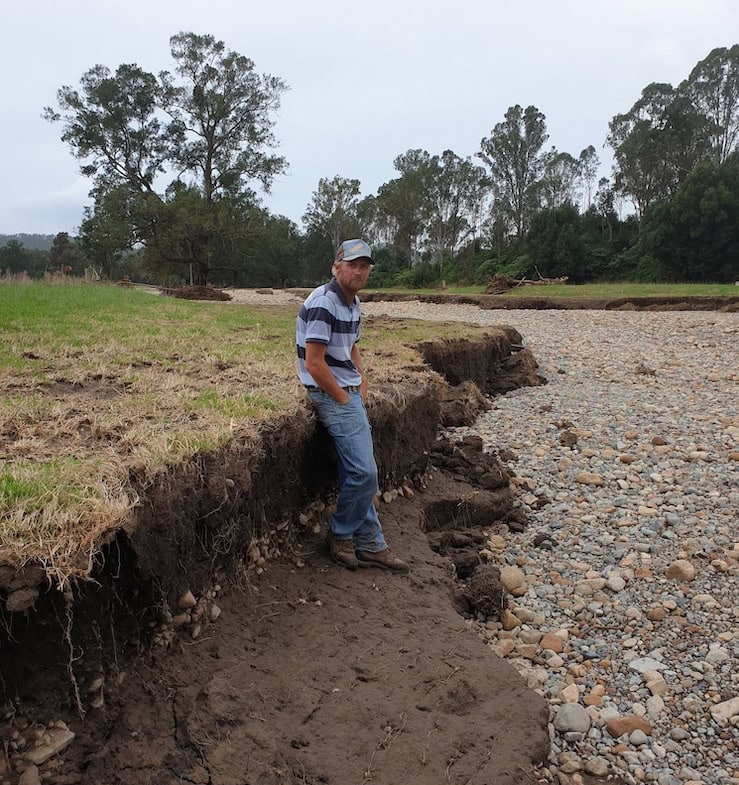
In the North West, where floodwaters moved more slowly, farmers near Mungindi were isolated for up to 10 days and had to receive food and mouse bait drops by air.
�Farmers were telling me mouse bait supplies were just as important as the floods were pushing them by the thousands over levee banks,� says NSW Farmers Regional Service Manager Mick Collins. He adds that damage to the road network in the North West has been extensive, and grain growers have been forced to delay winter crop planting.�
Garah wool producer and NSW Farmers Wool Committee Chair Helen Carrigan says the flood coincided with lambing time, leading to some mortalities and pregnancy sickness.
�Our whole farm went under as we have two creeks that come together, and because there was a good grain crop last year the floods have pushed a lot of stubble on to our fences.�
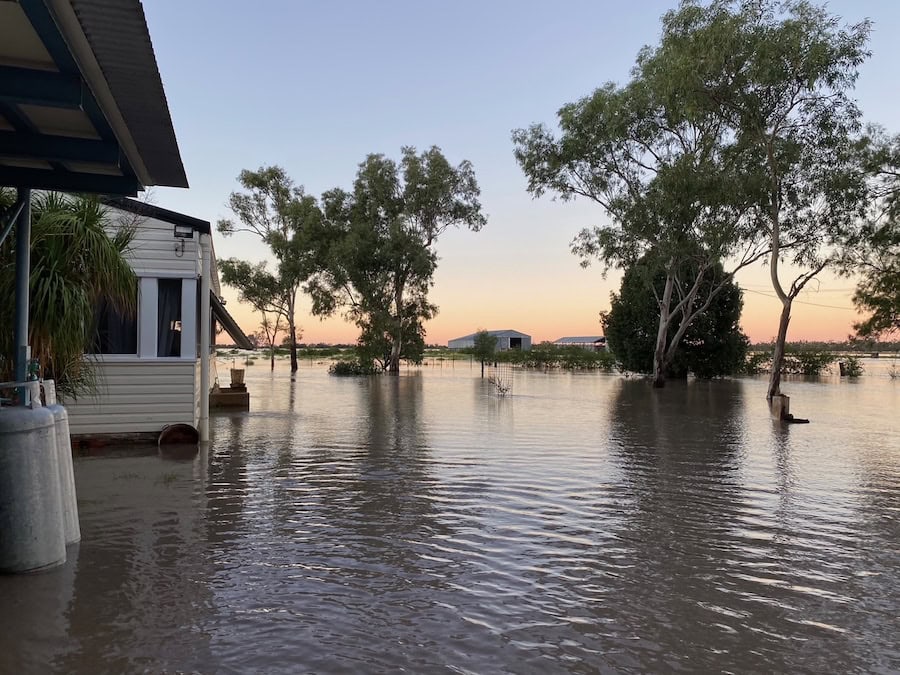
Home turf
The March floods will not only impact food supply. Homeowners, sporting organisations, golf courses and councils will be facing a shortage of natural turf. NSW turf farmers grow around 9.5 million square metres � around a quarter of the total Australian turf production � with the majority along the banks of the Hawkesbury River.
Freemans Reach turf farmer Tony Saad says his family�s 50 hectares were swallowed by up to three metres of water. Tony and his brother Paul grow commercial couch and kikuyu varieties to supply sporting fields, golf courses and parks. �Some paddocks won�t be harvested for another 12 months now. Spring is the busiest time for us in terms of harvesting, and the yield will depend on how much silt was dumped. There will be some paddocks with reduced yields and others that won�t reach the harvestable stage.� Tony�s family managed to save the machinery, but there has been damage to sheds and irrigation infrastructure.�

NSW Farmers President James Jackson says the State and Federal Governments and the Rural Assistance Authority (RAA) have stepped up to ensure farmers can apply for recovery grants of up to $75,000 as soon as possible. �This has provided some certainty to farmers in flood affected regions, allowing them to start planning the recovery process,� he says. �The need for this assistance is widespread, as livestock producers need to organise fodder and repair fences, and oyster farmers need to replace stock and equipment.�
The NSW Department of Primary Industries (DPI) and Local Land Services (LLS) have been working together as the Agriculture and Animal Services Functional Area (AASFA) to provide on-the-ground assistance.
�AASFA staff have assisted with animal assessment and veterinary advice, providing livestock feeding and management advice, stock disposal, and caring for animals in evacuation centres,� says AASFA Incident Controller Simon Oliver. �Primary producers are encouraged to apply for the disaster recovery grants scheme so the RAA can determine eligibility.��
Applications for the recovery grants can be made via the NSW Rural Assistance Authority, by calling 1800 678 593 or online at raa.nsw.gov.au
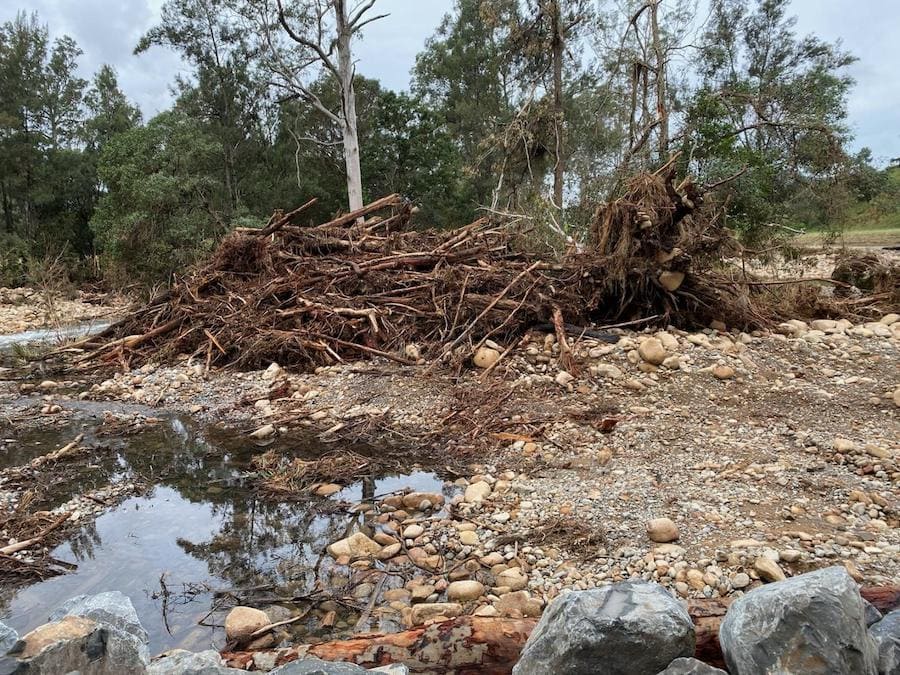
Floods swamp oyster recovery
�Every cent people get off their oysters in the next few years will go into restocking and buying gear,� says NSW Farmers Oyster Committee Chair Todd Graham.
Spat, or juvenile oyster stock, need warm conditions to grow, and Todd says hatcheries and nurseries will struggle to have spat to sell until the warmer spring months. �With oysters taking three years to reach maturity, any disruption to the growing cycle sets the industry back.�
The NSW oyster industry was in recovery mode after a double whammy of bushfires and a COVID 19 shutdown, and farmers were working hard to meet a surge in demand over the Easter holiday period. The March floods swamped that road to recovery, particularly on estuaries north of Sydney. Sheds were flooded and growing infrastructure destroyed or lost, and farmers estimate oyster mortality will be in the millions.
�It�s going to take a couple of months before we know how many oysters we�ve got left,� Todd says. He farms oysters on the Macleay River on the Mid North Coast near Kempsey, and estimates he has lost about 50 per cent of his oysters. But despite their devastating losses, oyster farmers in the region were hailed heroes for braving the floodwaters in their punts to save lives, and deliver essentials to isolated homes and fodder for livestock.
David Tunstead, a fifth generation oyster farmer on the Hastings River at Port Macquarie, was among them. �In the first week all we did was help people and deliver hay for cattle � the flood was so high and extreme. Since then, we�ve been trying to fix our farms and work out what�s been lost,� David says. He estimates he�s lost half his infrastructure and stock, which equates to about one million oysters of varying ages, at an approximate cost of $500,000.
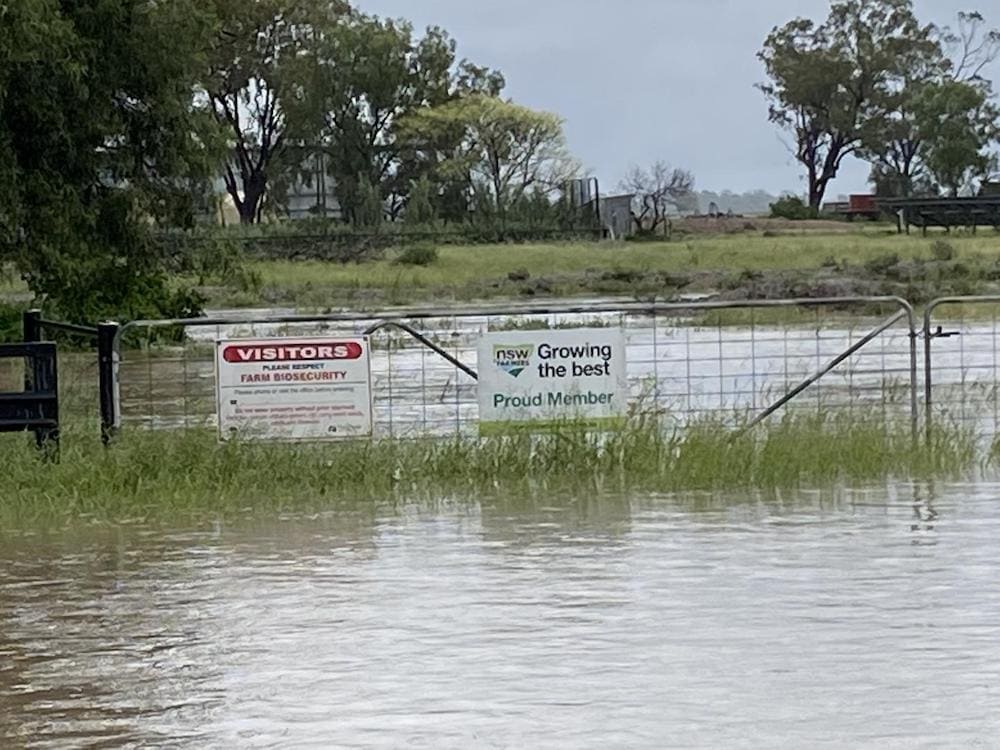
NSW Farmers launches flood appeal
NSW Farmers has launched a Flood Appeal through its Natural Disaster Relief Fund (NDRF) to assist farmers with recovery efforts.
�The extent of flood damage won�t be known for some time, but we want to make sure we�re doing everything we can to assist farmers to recover,� says NSW Farmers’ CEO Pete Arkle.�
�The Fund provides financial assistance, goods or services to primary producers adversely affected by flooding, to ensure they can continue to operate their farms while dealing with or recovering from a natural disaster. I headed to the Mid North Coast region in April and the damage is daunting. The floods have really decimated riparian zones.�
NSW Farmers’ CEO Pete Arkle.�
For more information or to donate, please visit nswfarmers.org.au/donate
If you would like to read a story on how oyster farmers banded together to help others during the floods, click here.


